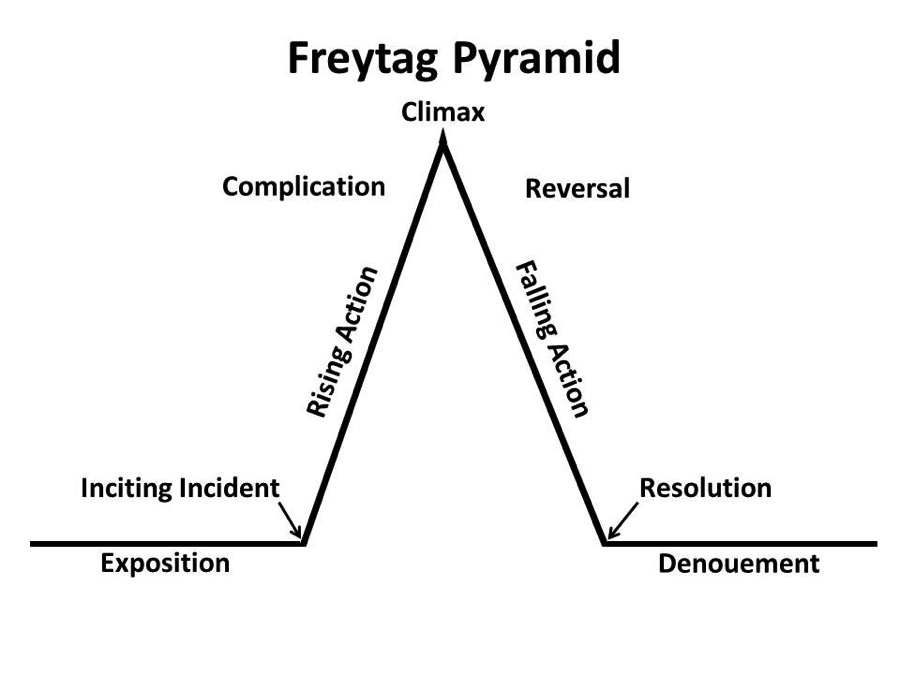Novel Planning – Part 6 – The Freytag Model

The next novel planning method I’m sharing with you is called the Dramatic Structure or The Freytag Model/Pyramid, named for Gustav Freytag who first described it using ancient Greek and Shakespearean dramas. This is the primary method I’ve used to teach novel planning. Another variety of this is The Story Spine.
The Freytag Model uses 7 parts to build the story.
The Freytag Model

1. Beginning or Exposition
The characters and setting are introduced as well as any needed background for the main character and antagonist. The main character’s life is in stasis. He doesn’t seem inclined to change anytime soon.
2. Inciting Incident (Exciting Incident)
Something happens to force the main character out of his comfort zone and into the action of the story.
3. Rising Action
The main character must now go about to solve the problem brought on by the inciting incident. This is the largest part of the storytelling in the book.
4. Climax
The main character faces his final challenge. This is the turning point of the story, where the main character must face the antagonist and draw on inner strength or skill he has gained during the Rising Action to defeat them.
5. Falling Action
The conflict unravels between the main character and antagonist, though the final outcome may still be in doubt.
6. Resolution
The main character either succeeds or fails against the antagonist and their life must move forward from this event.
7. Denouement
Also known as the ending. The plot threads are drawn together into their final conclusion. We find out what happens to the main character and possibly the antagonist now that the story is over.
Using this method, you can write a sentence or two about the plot for each of the points except Rising Action. You’ll need enough plot points in the Rising Action to carry you through the majority of the book – around 20-30 for a 50,000 word novel. Rising Action is the largest part of the book – also known as the middle. 😉
Another item to note is that there is very little story telling that will take place between the Climax and Denouement. Once the final conflict has been resolved, the story must also be resolved or people will just stop reading. So you’ll want to have a well thought through ending.

Leave a Reply
Want to join the discussion?Feel free to contribute!